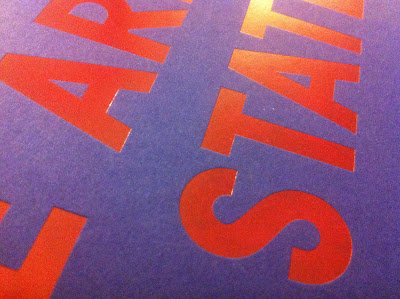BINDING
PERFECT BOUND:
Definition: Perfect Binding is a method for binding printed sheets suitable for binding documents where they are too thick to saddle stitch. Perfect Binding is most commonly used on paperback books.
What is it used for? Commonly used for Price Lists, Magazines, Brochures, Catalogues, PLOF, Books, Parish Plans, Town Plans
At What Point do we do it? Perfect Binding is a print finishing process (after printing).
How do we do it? The pages and printed sections are gathered in order, spine milled (the spine is ground to provide a key), and held together with a hot melt adhesive. A cover (usually on a heavier paper weight) is attached to the spine and is formed around the book.
More about... The minimum thickness of a perfect bound print job is approx 3mm (around 48pp). The maximum thickness is 50mm.
This is a method of binding I haven't explored yet which I think could look really professional when designing my publications for the project.
Stapled concertina booklet: This method is obviously very simple but this specific example is a concertina booklet that folds out and looks quite nice. Its a small square format and uses nice stock with a thick card front cover. I think this would work quite well if I wanted to make a little itinerary booklet for my travel pack as its simple and pocket sized.
Sewn stitched: For quite thin booklets, this could be an alternative method for binding my itinerary book.
The Moleskine Cahier Pocket Plain Notebooks are offered as a set of 3 notebooks with plain (blank) pages, each with a heavy duty cardboard cover with visible stitching on the spine that matches the cover colour.
DEBOSS: Embossing and debossing are processes of creating either raised or recessed relief images and designs in paper and other materials. An embossed pattern is raised against the background, while a debossed pattern is sunken into the surface of the material (but might protrude somewhat on the reverse, back side).
This is something I want to try as a subtle design to my work in this project, I really want to focus on professional processes and stocks as I think this will be the best way to produce something industry standard for this project.
SPOT VARNISH: A varnish applied only to portions of a printed piece after printing, rather than to the entire sheet, typically for aesthetic purposes. Spot varnishing is commonly found on book covers, in which only portions of the cover are high ingloss, in contrast to the surrounding matte texture.








No comments:
Post a Comment